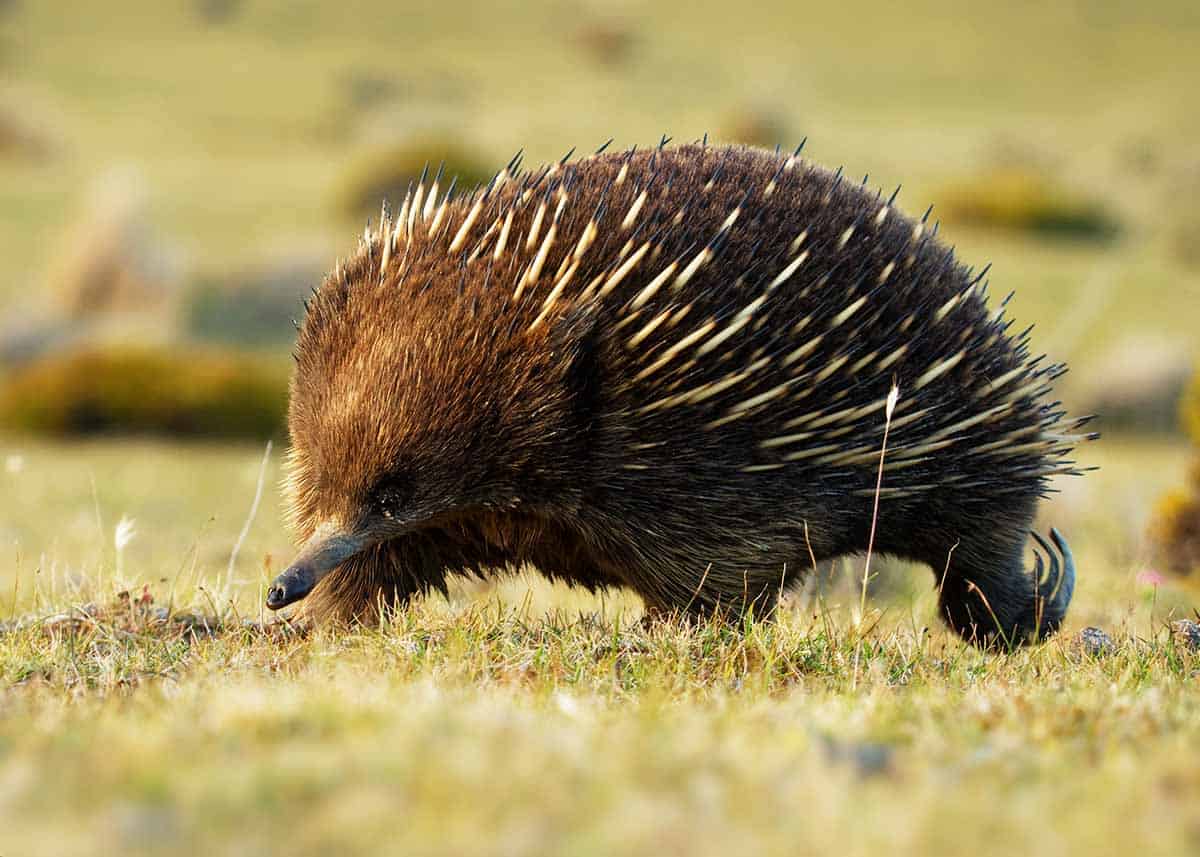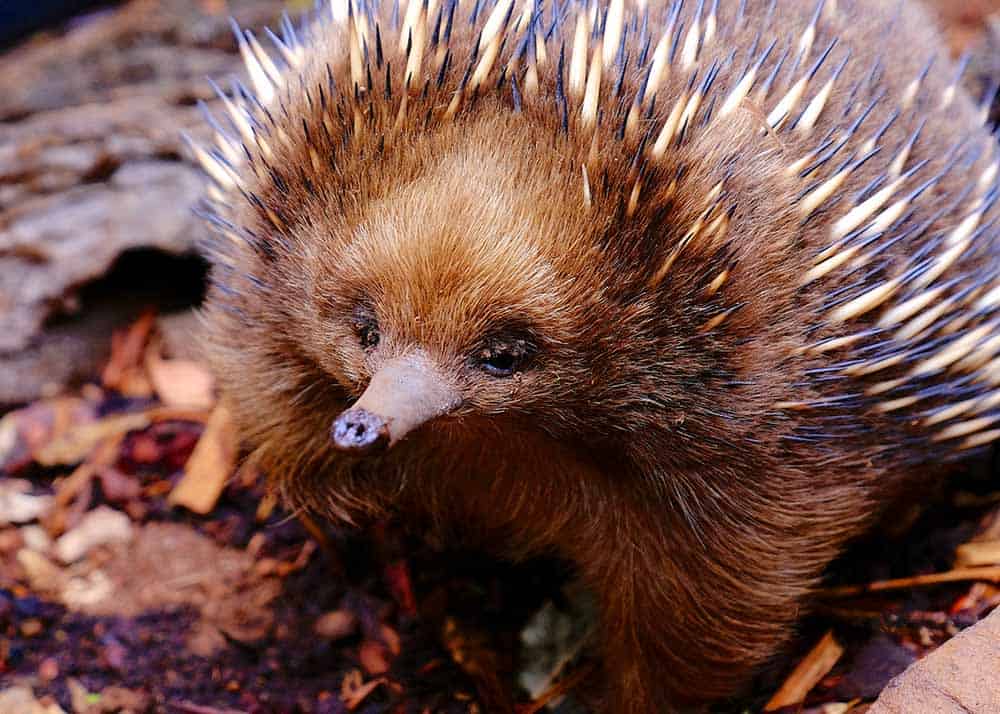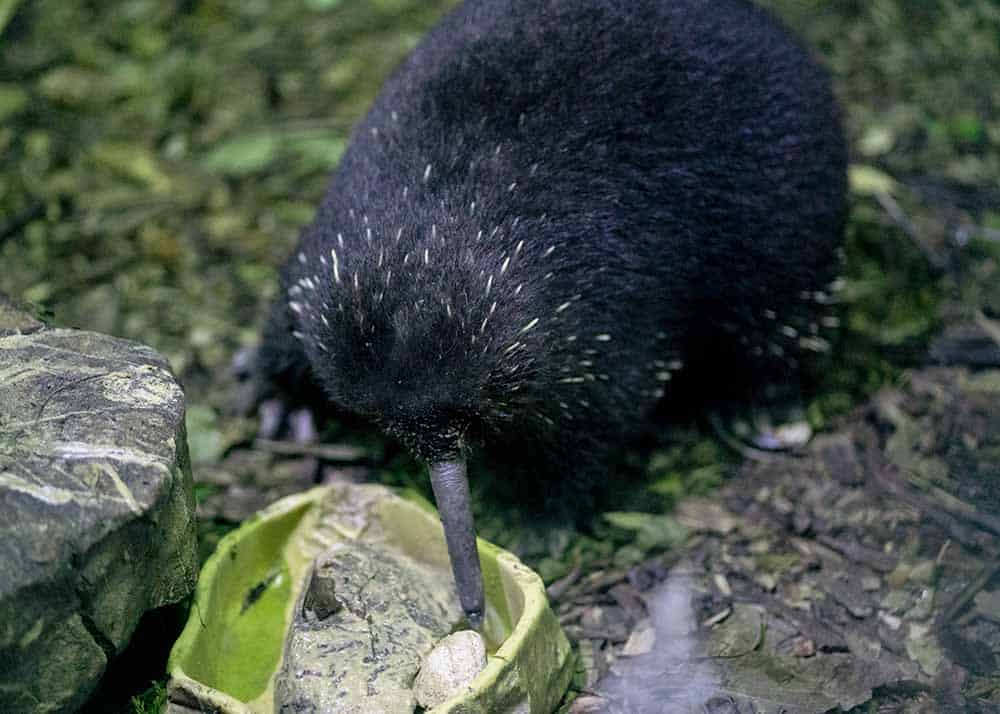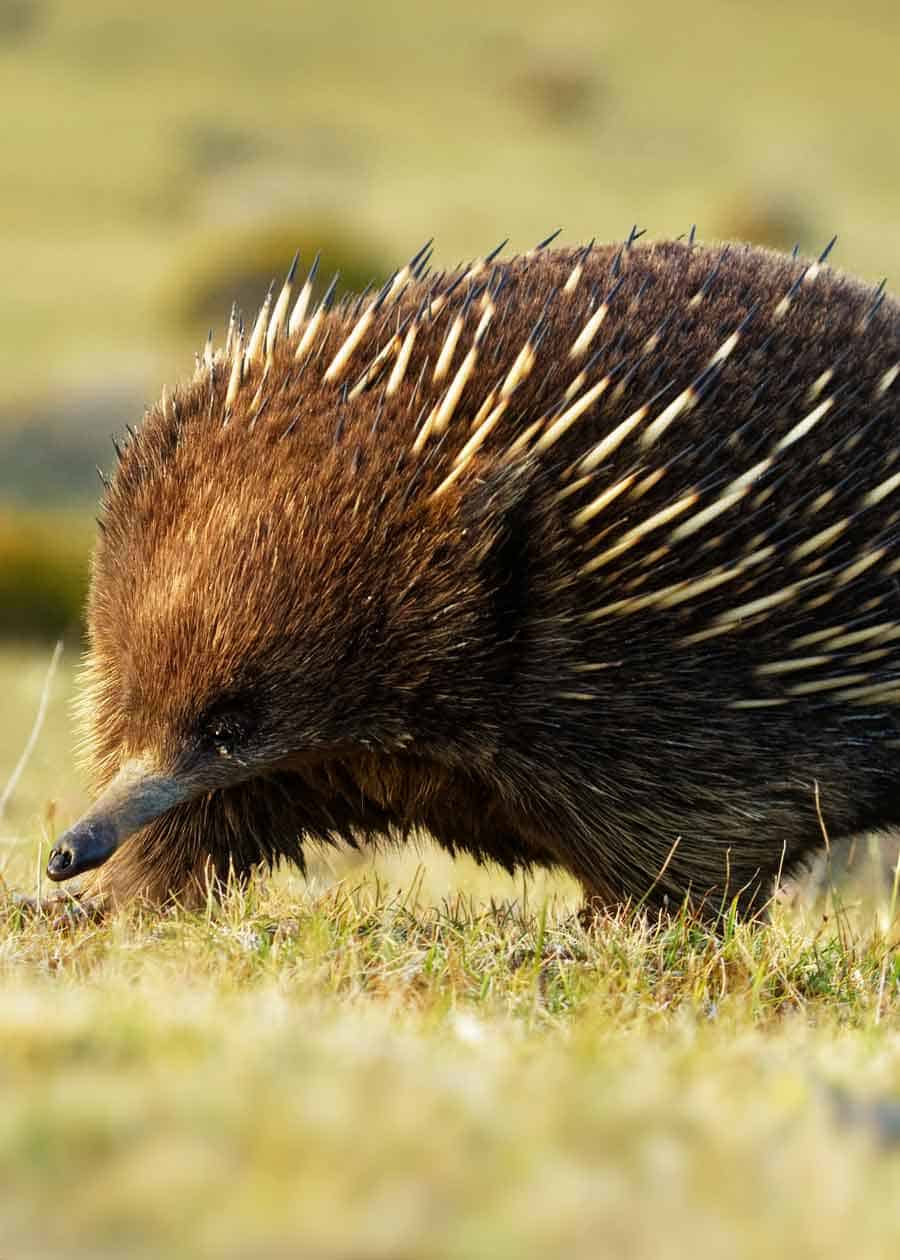We usually think of birds and fish as laying eggs. What about mammals? While most mammals give birth to live young, there are some mammals that lay eggs. They are known as monotremes.
The monotremes are mammals because they produce milk to feed their young. And also lay eggs. There are five species of monotremes:
- Short-beaked echidna
- Long-beaked echidna
- Western long-beaked echidna
- Eastern long-beaked echidna
- Duck-billed platypus

Table of Contents
All 5 Egg Laying Mammals
The mammary glands in monotremes are not defined as nipples or teats. Instead, these animals produce milk through mammary glands in the skin.
Not much is known about monotremes because these creatures are quite elusive. Monotremes are only found in New Guinea and Australia.
Monotremes are also unique in that they have only one opening for the removal of waste and reproductive purposes. Read on to find out what mammals lay eggs.
1. Short-Beaked Echidna
The short-beaked echidna, scientifically called Tachyglossus aculeatus, lays one egg.
The egg-laying process of short-beaked echidnas takes place shortly after mating has occurred. The incubation period for an echidna egg is only ten days.
After ten days, the egg hatches, and the baby echidna lives in its mother’s pouch. Short-beaked echidnas only care for their young until they are strong enough to find food independently.

Facts About the Short-Beaked Echidna
Both male and female short-beaked echidnas have pouches.
Some other interesting facts about short-beaked echidnas are:
- The male short-beaked echidna has a four-headed phallus.
- Short-beaked echidnas lay one egg every year, which explains their low numbers.
- The egg of a short-beaked echidna is soft-shelled and leathery.
- Female echidnas build dens for their young ones after they are ready to leave the pouch.
- The size of an egg laid by a short-beaked echidna is relatively small and looks like a jelly bean.
Short-beaked echidnas have long spines, which are hair follicles. These spines help protect them and their eggs from predators.
The echidna often protects itself by curling into a ball shape to make its spines protrude.
2. Long-Beaked Echidna
The main difference between a long-beaked echidna and the short-beaked echidna is the size of the snout. Long-beaked echidna has a longer snout, but they are smaller than short-beaked echidna.
The long-beaked echidna is also called Sir David’s long-beaked echidna, and the animal’s scientific name is Zaglossus attenborroughi.
The long-beaked echidna also lays one egg, which it stores in its pouch.

Facts About the Long-Beaked Echidna
Very little is still known about the long-beaked echidna, but here are a few facts about the animal:
- The long-beaked echidna is the earth’s longest-living mammal.
- The creatures do not have teeth and feed by sucking food through its beak.
- long-beaked echidnas are nocturnal creatures.
- Sir David’s long-beaked echidnas only live in New Guinea.
- The long-beaked echidna is a critically endangered species.
The long-beaked echidna also cannot lactate. It feeds its offspring by secreting milk through glands in its skin. The egg-laying habits of the long-beaked echidna are very similar to the short-beaked echidna.
3. Western Long-Beaked Echidna
The western long-beaked echidna is quite large compared to Sir David’s long-beaked echidna. The western long-beaked echidna can also eat earthworms because it has a longer snout.
The egg-laying habits of the western long-beaked echidna are no different from those of the small-beaked echidna.
Western Long-Beaked Echidna Facts
The western long-beaked echidna distribution has made studying the species easier. Some of the facts learned about these creatures are:
- It has three claws on the hind and forefeet.
- Western long-beaked echidnas are also found in Indonesia.
- The beak of the western long-beaked echidna point downward.
- Western long-beaked echidnas have fewer spines.
Western long-beaked echidnas lead a solitary life, but they will congregate during the breeding season. Female western long-beaked echidnas will lay a single egg 23 days after the breeding period.
Females take care of their young for a short period, usually until the offspring has spines and fur. The young then leave their parent’s burrow to pursue a solitary life.
4. Eastern Long-Beaked Echidna
These creatures are mainly located in New Guinea. Eastern long-beaked echidnas are quite similar to the western long-beaked echidna, but the key distinguishing features are that they are smaller in size. Eastern long-beaked echidnas have five claws on each foot.
Eastern long-beaked echidnas also use their snout to look for food, especially during night-time. The diet of eastern long-beaked echidnas consists of insects, earthworms, and larvae.
Facts and Features of the Eastern Long-Beaked Echidna
Finding out more about what mammals lay eggs is difficult due to its elusive nature. Here are a few facts and features of the eastern long-beaked echidna:
- They can be brown or black.
- They do not have a tail.
- The mouth of the eastern long-beaked echidna is at the snout’s tip.
- The breeding period for these creatures is between April and May.
Additionally, overhunting has caused dwindling populations of the eastern long-beaked echidna.

5. Duck-Billed Platypus
A platypus also belongs to the category of mammals that lay eggs. Platypus currently lives in Australia and Tasmania.
These creatures enjoy living near water bodies, and their unique body shape makes it easier for them to move underwater.
Platypuses become sexually mature at two years of age. The gestation period for a platypus is 21 days, and the incubation period, once it lays its egg, is ten days.
Features and Facts About Platypuses
The offspring of a platypus is commonly known as a puggle.
Some of the features of a platypus are:
- It can lay between 1 to 3 eggs.
- It has one mating season every year.
- Platypus are venomous mammals.
- The diet of a platypus consists of small aquatic animals.
- The duck-billed snout is highly sensitive, which makes it easier to find food.
Platypus will care for their young during the infancy period when the offspring lives in its mother’s pouch. By the time the baby is 4 or 5 months old, it can swim and begin to become more self-sufficient.
The platypus is one of many weird animals.

Learn about more animals that lay eggs.
Why Mammals That Lay Eggs Matter
Monotremes differ from other mammals because they lay eggs. Monotremes do not produce milk through nipples but through secretions in mammary glands on their skin.
Learning about mammals that lay eggs is the first step in helping conserve these beautiful creatures.
Monotremes have faced severe threats to their survival, primarily due to human activity. It is crucial to understand more about egg-laying mammals to better find ways to protect them and their habitat.
Drew Haines is an animal enthusiast and travel writer. She loves to share her passion through her writing.
She graduated high school at sixteen and started her own business, Everywhere Wild Media. And she runs Everywhere Wild and JustBirding. She also guest blogs on Storyteller.Travel
She lived in Ecuador for 6 years and explored the Galapagos Islands. Currently based in N.S., Canada.
